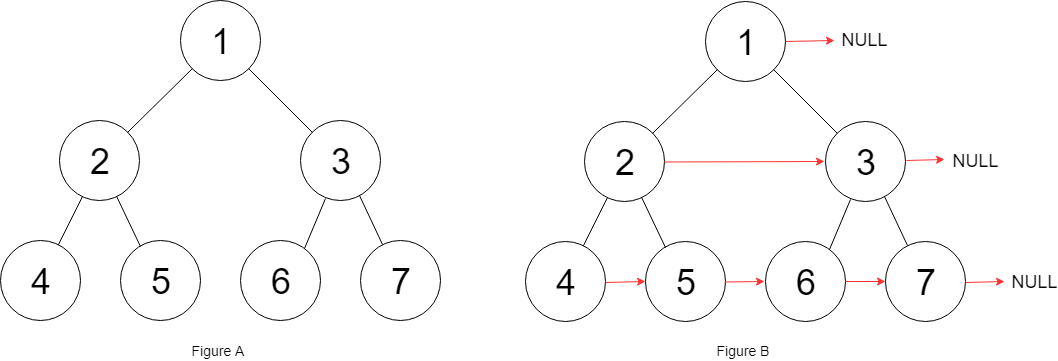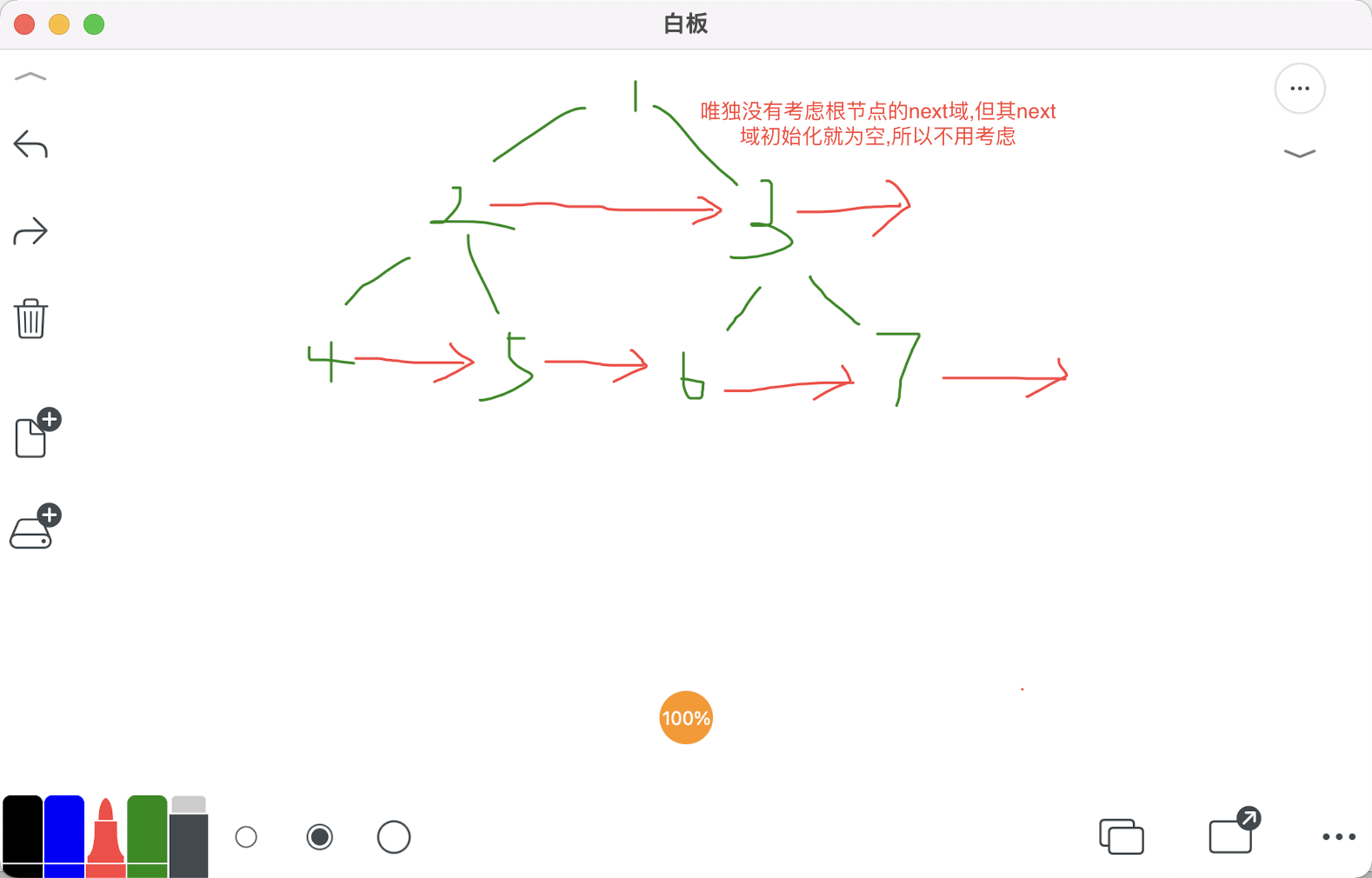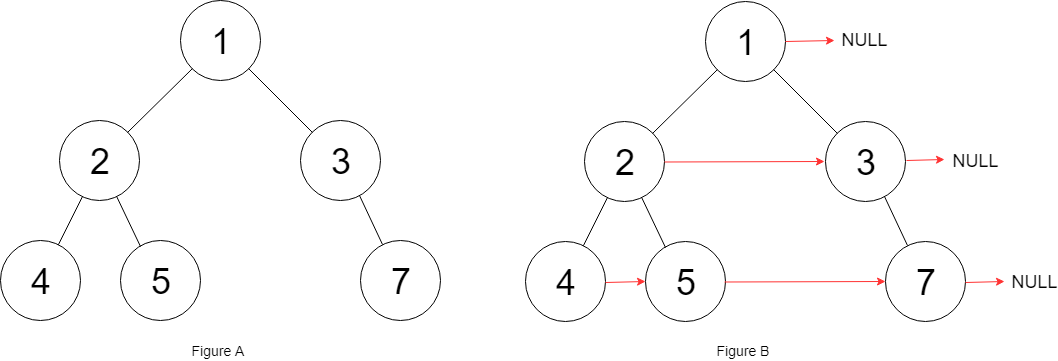给定一个 完美二叉树 ,其所有叶子节点都在同一层,每个父节点都有两个子节点。二叉树定义如下:
struct Node { int val; Node *left ; Node *right ; Node *next ; }
填充它的每个 next 指针,让这个指针指向其下一个右侧节点。如果找不到下一个右侧节点,则将 next 指针设置为 NULL。
初始状态下,所有 next 指针都被设置为 NULL。
示例 1:
输入:root = [1 ,2 ,3 ,4 ,5 ,6 ,7 ] 输出:[1 ,#,2,3,#,4,5,6,7,#] 解释:给定二叉树如图 A 所示,你的函数应该填充它的每个 next 指针,以指向其下一个右侧节点,如图 B 所示。序列化的输出按层序遍历排列,同一层节点由 next 指针连接,'#' 标志着每一层的结束。
示例 2:
提示:
树中节点的数量在 [0, 212 - 1] 范围内
-1000 <= node.val <= 1000
C++ class Solution {public : Node* connect (Node* root) { if (!root) return nullptr ; if (root -> left) root -> left -> next = root -> right; if (root -> right) root -> right -> next = root -> next ? root -> next -> left : nullptr ; connect (root -> left); connect (root -> right); return root; } };
给定一个二叉树
struct Node { int val; Node *left ; Node *right ; Node *next ; }
填充它的每个 next 指针,让这个指针指向其下一个右侧节点。如果找不到下一个右侧节点,则将 next 指针设置为 NULL。
初始状态下,所有 next 指针都被设置为 NULL。
进阶:
你只能使用常量级额外空间。
使用递归解题也符合要求,本题中递归程序占用的栈空间不算做额外的空间复杂度。
示例:
输入:root = [1 ,2 ,3 ,4 ,5 ,null ,7 ] 输出:[1 ,#,2,3,#,4,5,7,#] 解释:给定二叉树如图 A 所示,你的函数应该填充它的每个 next 指针,以指向其下一个右侧节点,如图 B 所示。序列化输出按层序遍历顺序(由 next 指针连接),'#' 表示每层的末尾。
提示:
树中的节点数小于 6000
-100 <= node.val <= 100
C++ class Solution {public : Node* connect (Node* root) { if (!root) return nullptr ; if (root -> left){ if (root -> right) root -> left -> next = root -> right; else root -> left -> next = getNext (root -> next); } if (root -> right){ if (root -> next) root -> right -> next = getNext (root -> next); else root -> right -> next = nullptr ; } connect (root -> right); connect (root -> left); return root; } Node* getNext (Node* root) { if (!root) return nullptr ; if (root -> left) return root -> left; if (root -> right) return root -> right; return getNext (root -> next); } };



